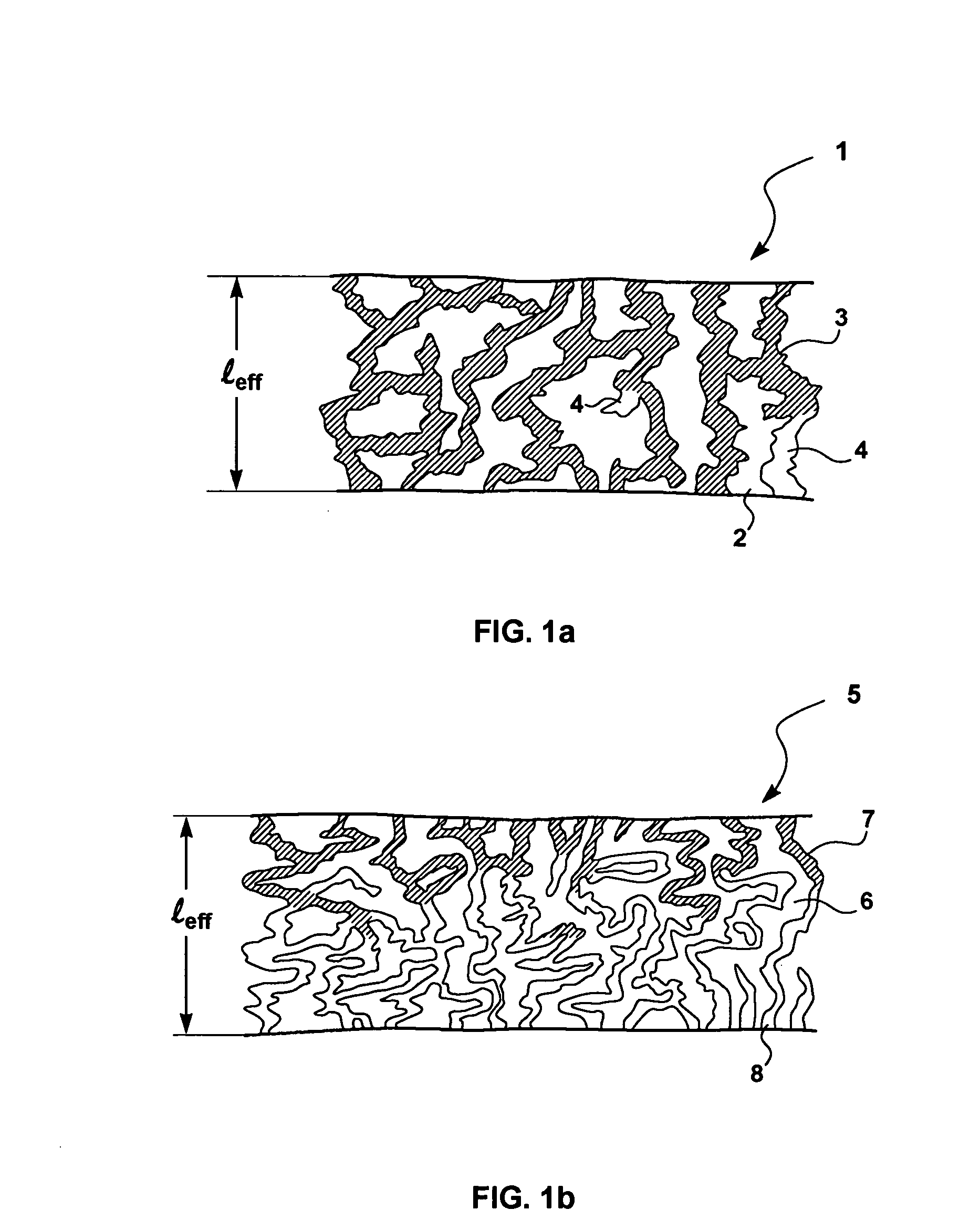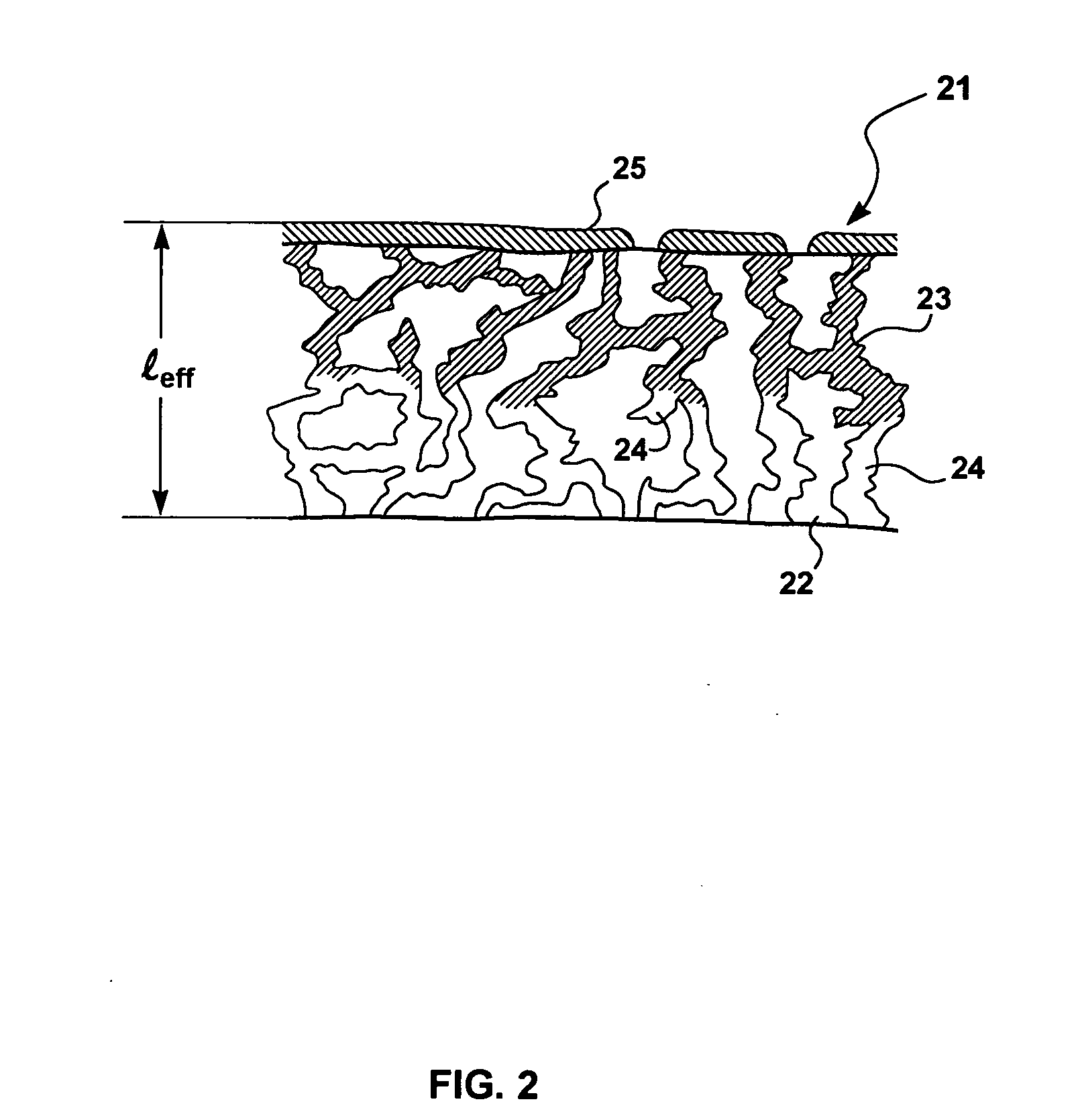Gas separation membranes and processes for controlled environmental management
a technology of environmental management and gas separation membrane, applied in the direction of membranes, separation processes, dispersed particle separation, etc., can solve the problems of affecting the water flux across the membrane, high permeability, and often not being able to meet the requirements of a controlled environment, so as to reduce the resistance to permeation and improve the effect of water flux
- Summary
- Abstract
- Description
- Claims
- Application Information
AI Technical Summary
Benefits of technology
Problems solved by technology
Method used
Image
Examples
example 1
Preparation of Microporous Support Layer for Composite Membranes—not in Accordance with the Invention
[0175]A series of microporous support membranes was made according to standard casting techniques used to prepare composite gas-separation membranes. A casting solution of polyetherimide (PEI) in a water-miscible solvent was prepared and doctored onto a moving backing web of polyester. The web was passed into a water bath, where the polymer precipitated to form the film. The coated web was collected on a take-up roll, washed to remove any remaining solvent, and dried to form the support film.
[0176]The result was a series of two-layer structures, of total thickness in the range 120-150 μm. The microporous support layer had an asymmetric structure, graded to a very fine, almost dense skin layer.
example 2
Preparation of a Typical Composite Gas Separation Membrane—not in Accordance with the Invention
[0177]A polydimethylsiloxane (PDMS) sealing / gutter layer was dip-coated onto a microporous support prepared as in Example 1. The PDMS layer was dip-coated with single pass through a solution of 2.5 wt % Pebax® 2533 (Atochem Inc., Glen Rock, N.J.) in ethanol, which formed the selective layer. The resulting membrane had four discrete layers: a backing layer, a microporous support layer, a gutter layer and a selective layer. The membrane was 150 μm thick overall and was designated as Sample 1.
example 3
Preparation of a Three-Layer Composite Membrane—not in Accordance with the Invention
[0178]A microporous support of the type described in Example 1 was single-coated with a solution of 0.5 wt % Pebax® 1657 in butanol to form a selective layer. This membrane differed from Sample 1 in that no gutter layer was included and a more hydrophilic grade of Pebax was used. The resulting membrane was 125 μm thick and was designated as Sample 2.
PUM
| Property | Measurement | Unit |
|---|---|---|
| RH | aaaaa | aaaaa |
| vol % | aaaaa | aaaaa |
| thickness | aaaaa | aaaaa |
Abstract
Description
Claims
Application Information
 Login to View More
Login to View More - R&D
- Intellectual Property
- Life Sciences
- Materials
- Tech Scout
- Unparalleled Data Quality
- Higher Quality Content
- 60% Fewer Hallucinations
Browse by: Latest US Patents, China's latest patents, Technical Efficacy Thesaurus, Application Domain, Technology Topic, Popular Technical Reports.
© 2025 PatSnap. All rights reserved.Legal|Privacy policy|Modern Slavery Act Transparency Statement|Sitemap|About US| Contact US: help@patsnap.com



